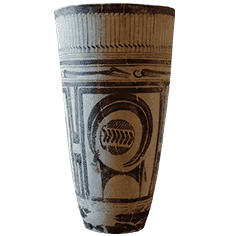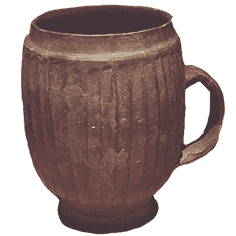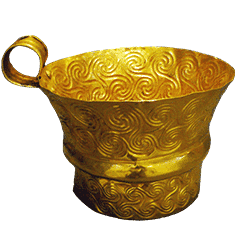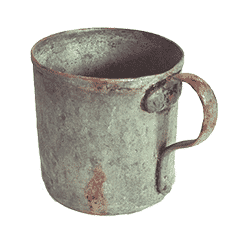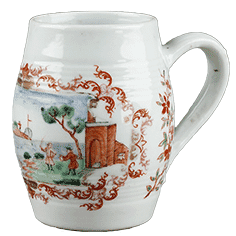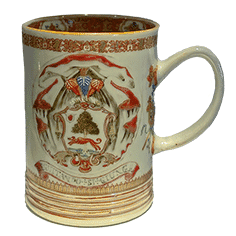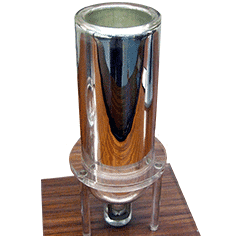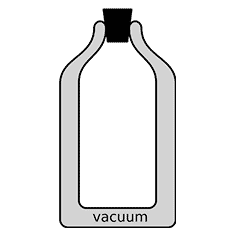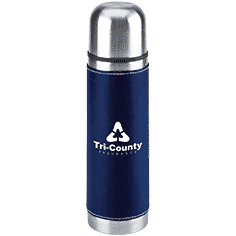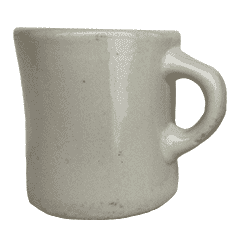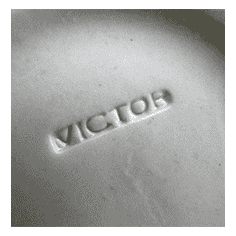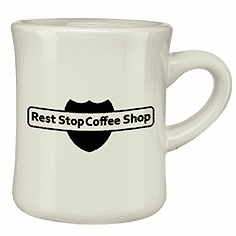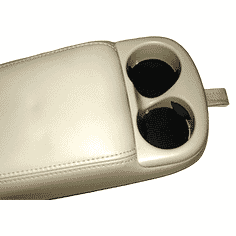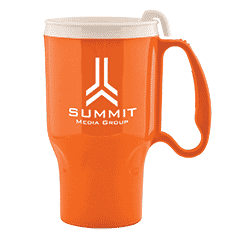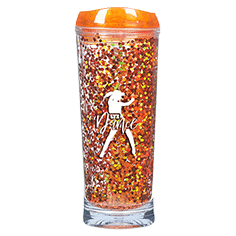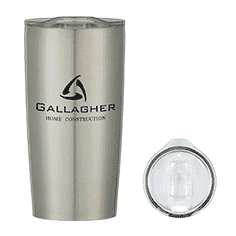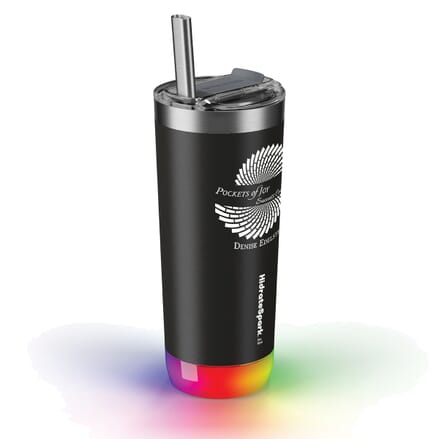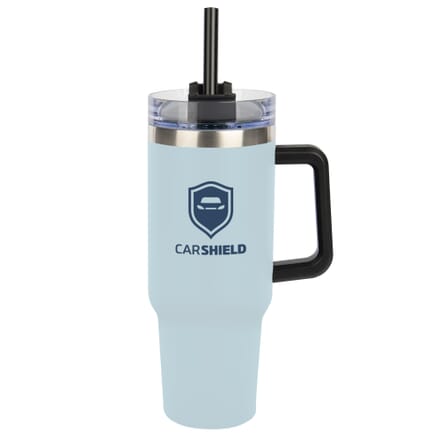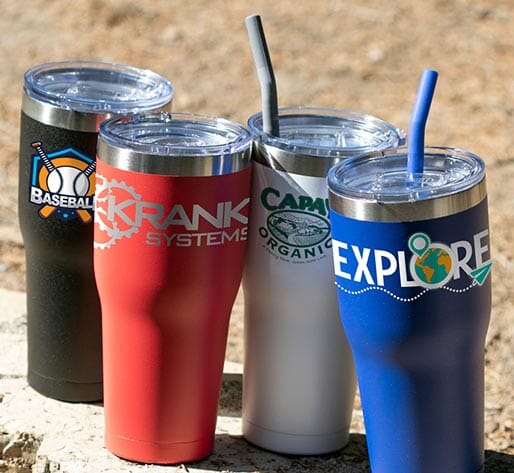The History of Travel Mugs & Tumblers: Popular Cups Over The Years

updated
December 4, 2025
When were travel mugs invented? Join Crestline for a history lesson on popular cups over the years that will leave you wanting to promote your own brand on a travel mug.
• 10000 BCE
- The earliest mugs date back to the prehistoric Neolithic Stone Age and were made out of bone and had no handles.
- The oldest mugs suspected of being from this era were also made of wood, but the wooden mugs have proven to be much harder to preserve.
- Try imprinting your logo on a mug that will stand the test of time with a wood tone variant of our popular Himalayan tumblers.
• 4000-5000 BCE
- Mugs began to be made out of clay. This made decorating the cups, and adding handles, much easier.
- The first ceramic mugs made on potter's wheels were found in about 2000 BCE.
- The clay used at this time made the walls of the mug too thick for a human mouth to comfortably drink from.
• 2000 BCE
- Thinner walls came with the development of metal work.
- Metal mugs were made from bronze, gold, silver, or lead.
- These were difficult to drink hot beverages from.
• 206 BCE–220 CE
- Although it is believed to have found its origin in China much earlier, wide use of high-fired porcelain to make ceramics began from 206 BCE to 220 CE.
- More common for standard coffee mugs, porcelain is still the most used material in ceramic drinkware.
- Porcelain and other ceramic materials have proven to be some of the best ways to make mugs for their thin walls and ability to hold hot or cold drinks.
• 1600s-1700s CE
- Following its discovery around 850 CE, coffee, and using mugs to drink it, became increasingly popular.
- People began using the term "mug" to refer to these types of cups because they resembled the profiles of prisoners, i.e. mug shots.
- The term "tumbler" first started being used for cups with round bottoms. It is unclear exactly why this is.
- In 1746, a royal edict was enacted in Sweden to heavily tax coffee. If one failed to pay this tax, they would be fined and have their coffee paraphernalia, including mugs, confiscated. Later that year, coffee was outlawed altogether, heightening the bootleg industry for these products.
• 1892-1904 CE
- Sir James Dewar invented the "vacuum flask," or vacuum insulation technology, in 1892 to keep his Palladium at the correct temperature.
- This technology started being used often for chemical experiments.
- Two glassblowers from Germany discovered that the vacuum technology could be used commercially to keep drinks cold or warm. Because Dewar had never patented the vacuum flask, the two took the rights to the double wall insulated cup and renamed it "thermos" in 1904.
- The thermos trademark became generalized many years later because the term started being used for any item possessing vacuum flask properties.
• 1945
- The traditional "coffee mug" was designed in 1945 by the Victor Insulator Company.
- The cups were built to military standards. They featured thick walls to ensure proper insulation and extra weight to prevent falls while being used on war ships.
- A rougher bottom was added to prevent the cup from sliding.
- Many people began adopting the Victor mug, and it became the standard for coffee drinkers.
• 1980-1994 CE
- Travel mugs became widespread due to the implementation of coffee club promotions at convenience stores which gave patrons discounts on refills when they bought a mug.
- "Trip sips" plastic mugs became popular as they attached to one's dashboard and often showed off a logo imprint.
- In 1983, the minivan was invented. This new type of vehicle came with built in cup holders notched into the dashboard, the kind that we have today.
- However, it wasn't until after the 1994 Liebeck v. McDonald's Restaurants case that cup holder implementation became standard practice for car manufacturers.
• Present
- Nowadays, new and innovative mugs are being brought to market all the time. Some of these include:
- Attractive and trendy floating confetti tumblers.
- Ever popular stainless steel travel mugs keep drinks hot or cold and offer a stylish appearance.
- Tumblers that glow with colored LED lights to remind the user to hydrate.
- Lidded and handled steel vacuum insulated tumblers in beautiful powder coated colors and generous sizes, that can still fit in most car cup holders.
- Nowadays, new and innovative mugs are being brought to market all the time. Some of these include:
For all your promotional travel mug needs, browse Crestline's wide selection of custom tumblers to find the perfect drinkware item to imprint your logo on.
FAQs About Travel Mugs & Tumblers
Mugs were invented as a practical solution for drinking hot beverages. While drinkware is an ancient invention, the mug design wasn’t perfected until centuries later. Early potters created clay mugs with handles, but these were thick, heavy, and uncomfortable to drink from. Mugs with thinner walls were later made from various metals. Unfortunately, because metal conducts heat, these mugs could easily burn hands. Finally, after porcelain was invented in China, porcelain mugs were created that included a convenient handle and could be safely used for both hot and cold drinks. Today, porcelain, ceramic, and glass are the materials most often used to make mugs.
Mugs were likely invented to allow people to comfortably enjoy a warm beverage without burning their fingers, and they’ve become a staple in homes around the world. Nowadays, mugs aren’t just functional; they often feature colorful designs, logos, and quotes that bring a smile to your face.
Travel cups were invented in the 1980s to make on-the-go lifestyles more convenient for those who wanted to bring their favorite hot beverages along while commuting or running errands. Early travel mugs featured spill-proof designs and insulated walls to keep hot drinks hot and cold drinks cold. Now, many travel mugs use technologies like vacuum insulation to regulate the temperature of drinks more effectively.
Harry Brearley developed stainless steel in 1913, and it proved to be ideal for drinkware, cutlery, cookware, kitchen appliances, and much more. It’s resistant to corrosion and rust, easily cleaned, durable, and resistant to flavor transfer. Stainless steel cups were invented in the mid-1900s and began to gain popularity especially in the military and for outdoor use. Today, they’re often used as a long-lasting alternative to plastic and glass.
Glassmaking dates back to ancient Mesopotamia and Egypt, but it took centuries to refine the art. The Renaissance introduced decorative drinkware and improvements to glassmaking techniques. With the Industrial Revolution came the mass production of glass mugs, making them more accessible. Finally, the tempering techniques of the 20th century improved the durability of glass mugs, allowing them to hold both hot and cold drinks. Today, glass mugs are appreciated because they’re easy to clean and don’t release any chemicals or strange flavors into drinks. Glass mugs are also durable, reusable, and sustainable, as glass is 100% recyclable.
Sir James Dewar, a Scottish scientist, invented vacuum insulation and the first vacuum flask in 1892. Because he never patented his design, two German glassblowers named Reinhold Burger and Albert Aschenbrenner improved Dewar’s insulated cup, claimed the rights to the product, and renamed it the “Thermos”. As vacuum insulation technology became more advanced and effective, other companies incorporated it into various types of drinkware, and Stanley cups, Hydro Flasks, and Yeti cups became popular options.
Travel mugs began to gain popularity in the 1980s due to coffee culture, longer commutes, and refill discounts at convenience stores. Travel mugs offered a convenient and spill-proof way to bring warm drinks along for the ride, and they were also a sustainable alternative to disposable coffee cups. Around the same time, the minivan was invented with built-in cup holders, and about a decade later, most car manufacturers included cup holders to cater to our on-the-go lifestyles. This contributed to the growing popularity of travel mugs, which continues today.
It depends on what material the mugs are made from. For example, some ceramic or glass mugs may not be suitable for hot beverages. Older mugs may contain harmful substances, such as cadmium and lead, in their glaze or paint. Cracked or chipped mugs may hold hidden bacteria and could leak or break easily if used. If you want to use a vintage mug, ask an expert or use a lead-testing kit to check for lead.
